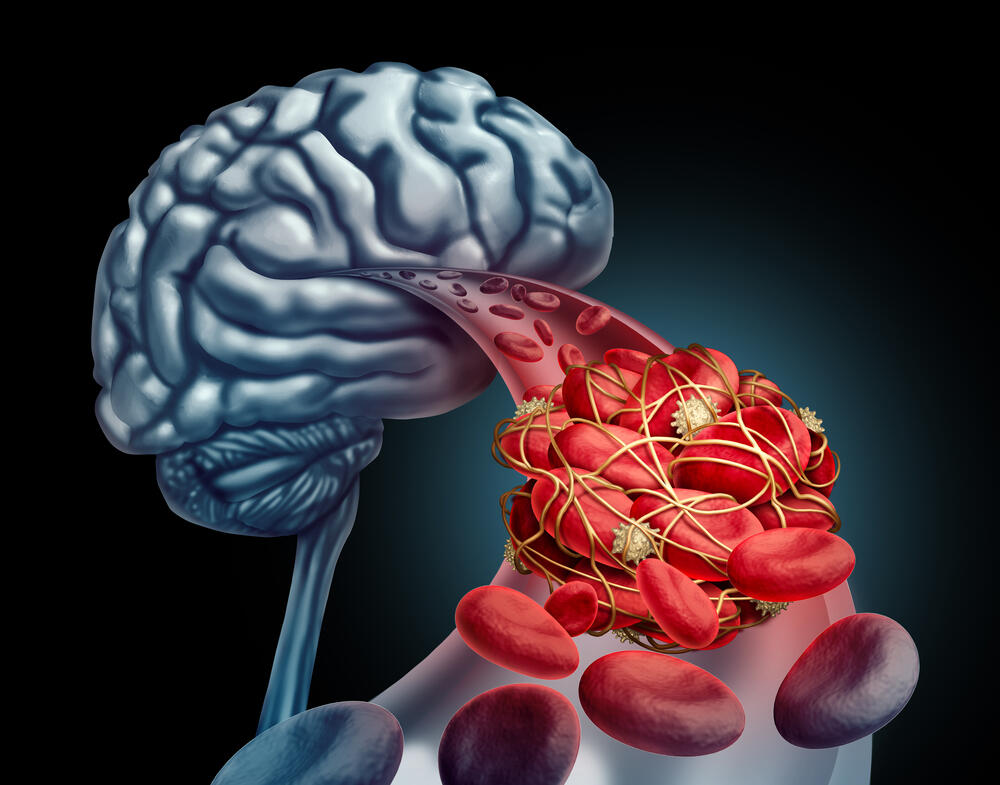A stroke can happen unexpectedly and in any situation. According to the data of the Croatian Society for the Prevention of Stroke, it is believed that this condition is caused in 85 percent of cases by blockage of a blood vessel with a clot.
However, another category is distinguished, the so-called mini-stroke or transient ischemic attack (TIA), which can indicate a more serious stroke in the future. That's why it's important to know how to recognize the symptoms of this condition because it can save your life. Namely, statistics show that about 20 percent of those who experience a mini-stroke are at risk of another stroke within 90 days.
The difference between a mini stroke and a stroke
"A mini-stroke occurs due to a temporary blockage of blood flow to the brain, spinal cord, or retina," explains Dr. Jonathan Graff-Radford, a neurologist at the Mayo Clinic.
Unlike a stroke, a mini-stroke does not cause permanent damage to brain cells or lead to permanent disability. However, the similarity of symptoms between a mini (TIA) and a stroke means that recognizing these early warnings is extremely important, as the risk of stroke rises sharply 48 hours after a TIA. It is important to know that the symptoms of a TIA are identical to those that occur in the early stages of a stroke, he says Gloria.
Symptoms of mini and stroke
You can recognize the symptoms of a stroke or mini-stroke by: international the acronym 'BEFAST', that is, (Balance, Eyes, Face, Arms, Speech, Time) which refers to:
- Balance
- Eyes
- Hanging face
- Arm weakness
- Difficulty in speaking
- Time to call 911
Recognizing these symptoms can potentially save your life.
Symptoms of a mini-stroke that we often do not notice
It is not rare that we often ignore these five symptoms, although, as doctors say, it is important to notice and react to them.
1. Unexplained dizziness or loss of balance
"A sudden burst of dizziness or an unexplained loss of balance can be a sign of a mini-stroke," says Dr. Graff-Radford.

Although dizziness and balance problems can arise from a variety of factors, their sudden onset, without a clear cause, should raise concern about a short-term disruption of blood flow to the brain.
What to watch out for in others: Watch out for someone who suddenly grabs a support or seems unsteady on his feet, that is, he has to sit down suddenly because of dizziness.
2. Loss of sight in one or both eyes
"Sudden and unexplained loss of vision in one or both eyes may be a symptom of a mini-brain," warns the American Stroke Association.
This temporary blindness or significant visual impairment is the result of a blockage that disrupts blood flow to the retina, which serves as an important warning sign of a stroke that should not be ignored.
What to watch out for in others: Pay attention if someone suddenly struggles with vision, blinks excessively, or seems disoriented, trying to focus on objects.
3. Weakness or numbness on one side of the body
The American Stroke Association points out that the sudden onset of weakness or numbness on one side of the face, arm or leg is a common warning sign of a stroke.
What to watch out for in others: If you notice that a person has one of the mentioned symptoms, do not leave them alone and be ready to call an ambulance.
4. Severe headache without known cause
According to the Cleveland Clinic, headaches can be a normal part of life, however, if they happen suddenly and are severe, they can be a warning sign of a mini-stroke. Unlike typical headaches, this pain comes on quickly and intensely, often without common triggers such as caffeine withdrawal or dehydration.

What to look out for in others: Watch out for someone who suddenly clutches their head in unexplained pain.
5. Confusion or difficulty understanding speech
A sudden change from clarity to a state of confusion or difficulty understanding what others are saying can be a serious indicator of a small stroke.
The experts are in statement in 2022 emphasized that unilateral weakness, aphasia, or dysarthria were strongly associated with a high probability of TIA. Aphasia is defined as a problem in speaking or understanding language, while dysarthria is characterized by slurred or slow speech that can be difficult to understand.
What to watch for in others: Notice if someone stops abruptly in the middle of a conversation, seems confused by familiar language, or tries too hard to articulate their thoughts clearly.
Risk factors
According to experts, the symptoms of a mini-stroke can last from a few minutes to a whole day. Some of the risk factors to discuss with your doctor include:
- Age - the risk increases after the age of 55
- Atrial fibrillation - irregular heartbeat
- Diabetes - particularly poorly regulated
- High blood pressure
- Heart disease
- Smoking habits - doubles the risk of stroke
Mini-stroke prevention
Knowing the mentioned risk factors and changing lifestyle, proper diet and exercise can significantly reduce the risk of TIA. This includes:
smoking cessation, reducing the intake of ultra-processed foods, reducing the intake of saturated fat and trans fat, reducing the intake of salt, limited alcohol consumption, regular physical activity and taking care of mental health.
Bonus video:





